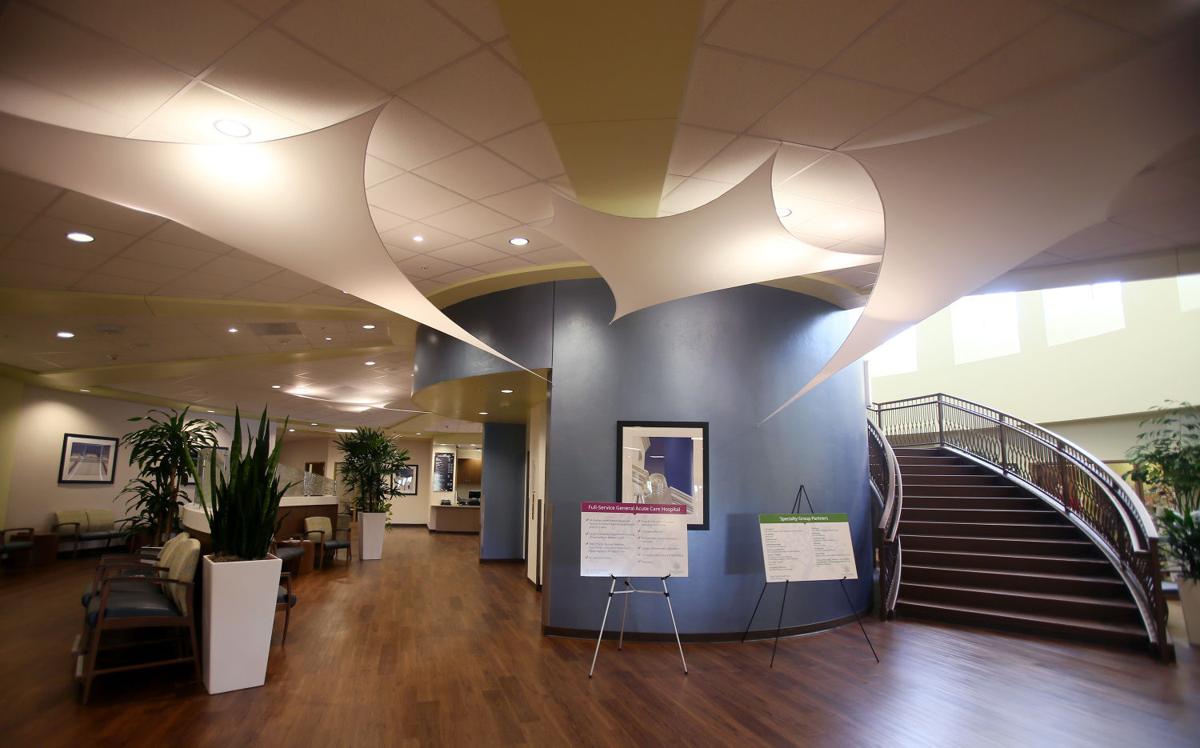PHOENIX — Breaking ranks, a Southern Arizona hospital is urging the state Supreme Court to quash the levy that finances health care for about 400,000 needy.
In a new court filing, attorneys for Green Valley Hospital are siding with the conservative Pacific Legal Foundation in asking the high court to declare that what state officials call an “assessment” is actually a “tax.”
That distinction is important.
If the justices agree, it means the legislation authorizing the Arizona Health Care Cost Containment System to collect about $265 million a year from hospitals to finance Medicaid expansion and restoration was illegally enacted. The state constitution requires a two-thirds vote for tax increases from both the House and Senate. The 2013 legislation did not get that margin.
That would not only absolve Green Valley Hospital from paying its share, but would end the levy on all hospitals. Without the money to pay for the state’s share, the federal dollars would dry up and all the people added to the AHCCCS rolls in 2013 would once again be without health insurance.
The filing also puts Green Valley Hospital, which recently filed for bankruptcy protection from creditors, at odds with the Arizona Hospital and Healthcare Association, whose members pay the levy. The association’s position is that the cost to its members is better than having more patients show up at their doors without insurance, whose bills have to be written off as bad debt.
But John Matuska, Green Valley Hospital administrator, said the numbers don’t work for his facility, which is in a retirement community. He said the hospital, which largely serves patients with Medicare, is paying far more in its assessment than it gets back.
“They’re asking me to treat Medicaid patients for free,” he said.
Before 2013, AHCCCS provided free care for most people below the federal poverty level, with the federal government picking up about two-thirds of the cost.
The federal Affordable Care Act, however, offered an incentive to states to expand eligibility to 138 percent of the federal poverty level, about $28,200 a year for a family of three. In essence, the federal government would pick up virtually all of the expansion’s cost.
But to qualify, the state had to once again provide coverage for single adults who were below the poverty level. Enrollment in that program had previously been frozen in a budget-saving move.
To pay for that, then-Gov. Jan Brewer crafted a plan to have the cost paid through an assessment on hospitals. With the benefits outstripping the costs, the hospitals did not object.
Brewer cobbled together a coalition of Democratic lawmakers and a few Republicans to push it through. But the majority of GOP lawmakers, who opposed it, filed suit, contending the assessment is a tax and that their opposition was enough to deny the two-thirds vote.
In a ruling earlier this year, the Court of Appeals disagreed.
The judges acknowledged that the purpose of the Medicaid expansion was to provide health care to more of Arizona’s indigent population.
But they said the purpose of the assessment itself was to help hospitals provide care by leveraging more federal dollars. And because they — and not the general public — are the beneficiaries, the judges said that makes the levy a legal assessment.
Attorney Jeff McCoy of the Pacific Legal Foundation said Green Valley Hospital’s financial situation shoots a big hole in that legal conclusion.
In the new legal filings, he said the arrangement has not worked out the way it was promised. Specifically, the $773,520 assessment the hospital paid for the fiscal year that ended June 30 is five times more than the benefits the facility says it gets from fewer patients showing up at its doors without insurance.
Put another way, McCoy said the money being paid by Green Valley Hospital is going to others, something he said is the classic definition of a tax.
“When the government raises taxes, they’re spreading it around, and they’re not necessarily giving back what everybody puts in,” he said.
Matuska, hired in October, said the losses from the assessment are not anticipated to be quite as large this current budget year, perhaps only about $48,000.
But he said the hospital still is not making money on the Medicaid expansion. “And everybody else is,” he said.
A spokesman for the Arizona Hospital and Healthcare Association, which has asked the Supreme Court to uphold the levy, said the association has no comment on Green Valley Hospital’s decision to oppose it.
The 2013 legislation was set up to allow AHCCCS Director Tom Betlach to grant exemptions.
He did that for Mayo Clinic, based on that hospital’s argument that it sees very few medically needy patients. And Phoenix Children’s Hospital, whose needy patients are covered by a different program, also pays nothing.
Green Valley Hospital, with 80 percent of its patients covered by Medicare, didn’t get a chance to ask for an exemption because it didn’t open its doors until 2015. And Matuska said AHCCCS rejected his request for one now.
While the assessment is not the sole reason for the hospital’s problems, Matuska said it is a factor. If a judge grants relief from debt, he said it should wipe out about $700,000 the hospital owed the state on April 3 when it filed for bankruptcy.
But anything owed since that date remains a legal obligation of the financially strapped 49-bed facility.
“The hospital got off to a bad start,” Matuska said.
“It was overbuilt, undercapitalized, poorly managed,” he continued. “It got to a point where we had close to $110 million in debt.”
Most of the $70 million raised for the facility came from Chinese investors through the EB-5 program. It allows those who create jobs in the United States to get an expedited “green card,” giving them legal presence in this country.





